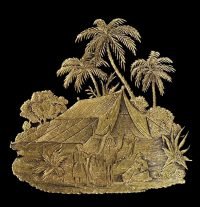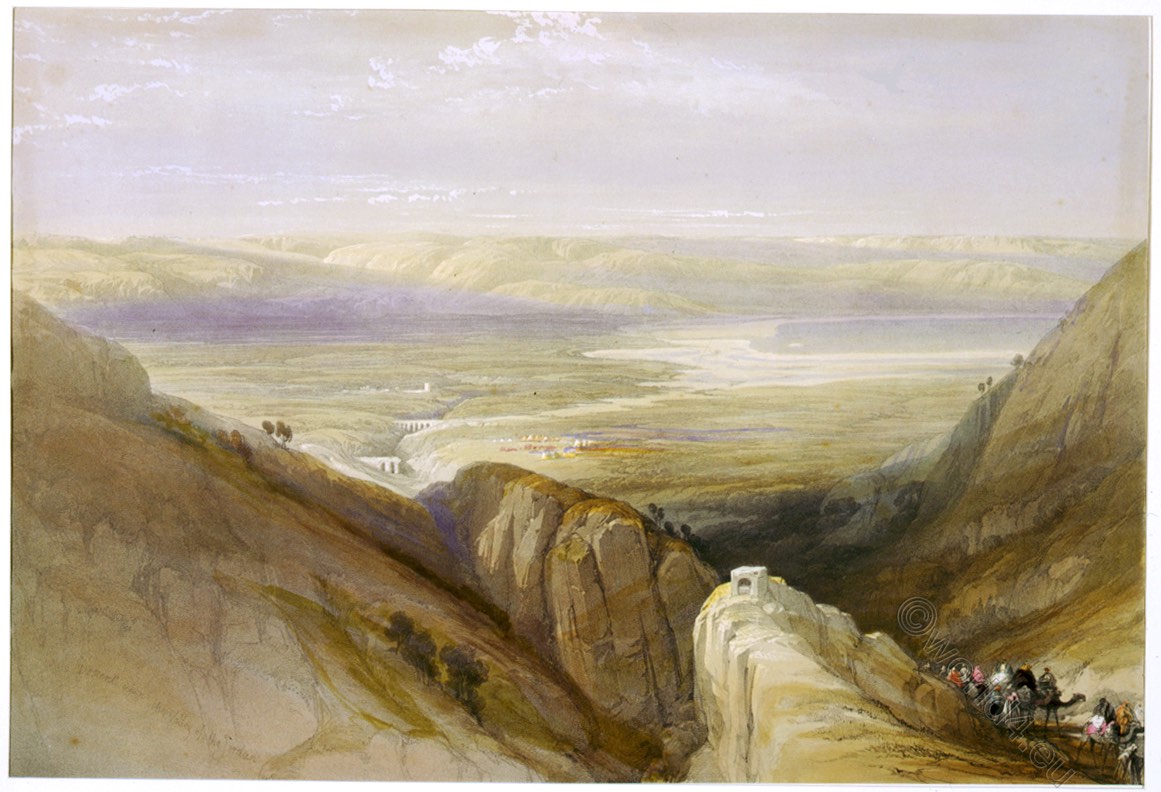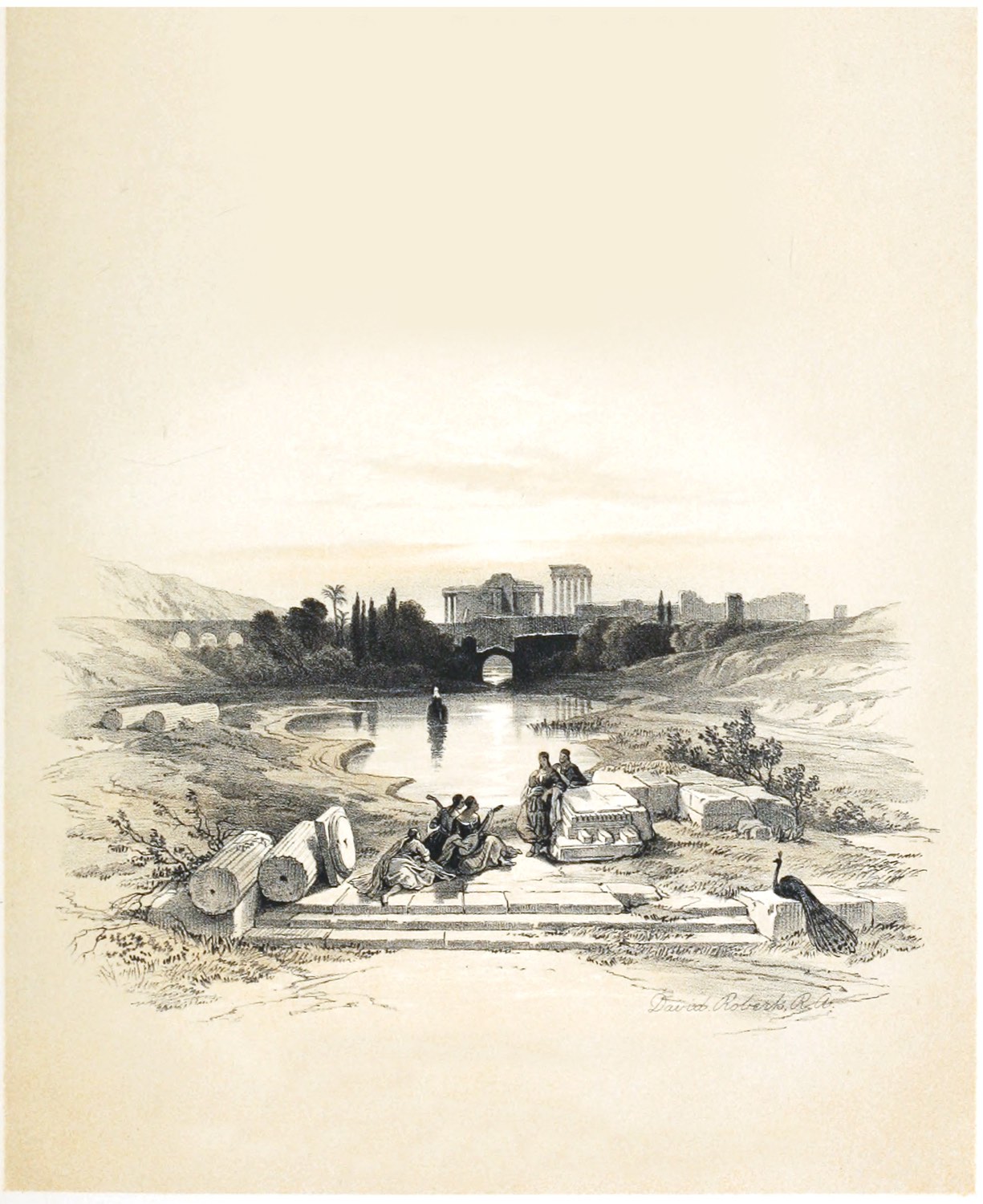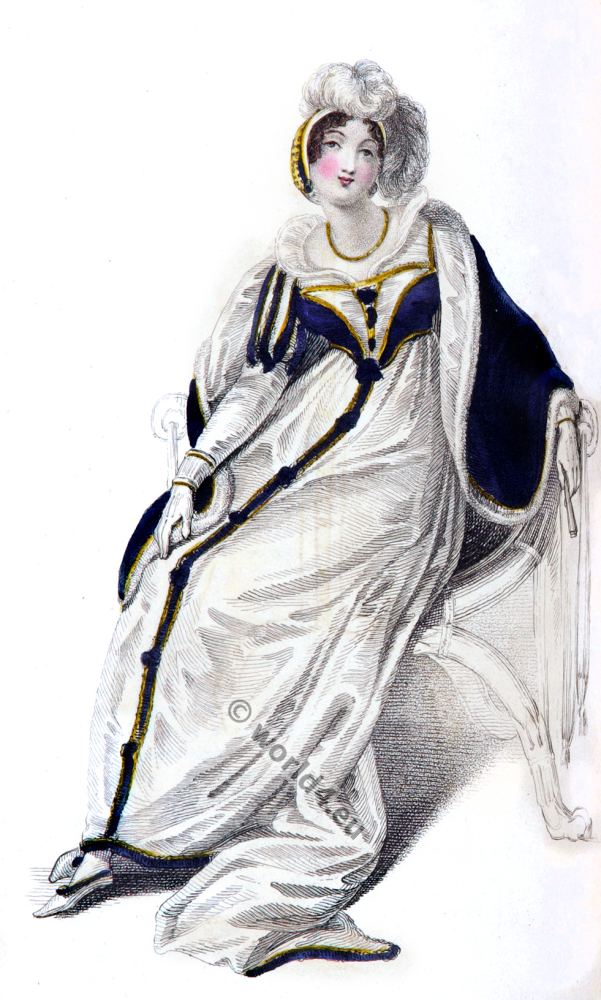Plate 50
THE DEAD SEA, LOOKING TOWARDS MOAB.
The Dead Sea lies in a deep Caldron, surrounded by cliffs of limestone rock, utterly naked, the whole giving the strongest look of sterility. The surrounding region too is a naked desert; it has an Egyptian climate, and from its exposure for seven or eight months of the year to the full power of the sun, it is obviously condemned to hopeless aridity. 1)
The height of the surrounding cliffs so generally screens the Lake from the wind that it but seldom loses its smoothness of surface.
Yet, though the utter solitude of its shores, especially in connexion with the history of the buried Cities, impresses the spectator with the idea that he is looking upon a mighty Sepulchre, the immediate aspect of the waters is bright and even sparkling; they lie like a vast mirror, reflecting with almost undiminished lustre every color and radiance of the bright sky above.
Flocks of birds too, with their flight, and even with their songs, enliven the scene: yet under every aspect, it impresses the mind with a sense of the mysterious and monumental.
The View is taken from one of the hills of Engedi, immediately above the Convent of St. Saba, and looking down on the “Valley of Fire,” through which the Kidron winds. 2)
1) Biblical Researches, ii. 219. 2) Roberts’s Journal.
Source: The Holy Land, Syria, Idumea, Arabia, Egypt, & Nubia, by David Roberts, George Croly, William Brockedon. London: Lithographed, printed and published by Day & Son, lithographers to the Queen. Cate Street, Lincoln’s Inn Fields, 1855.
Discover more from World4 Costume Culture History
Subscribe to get the latest posts sent to your email.








